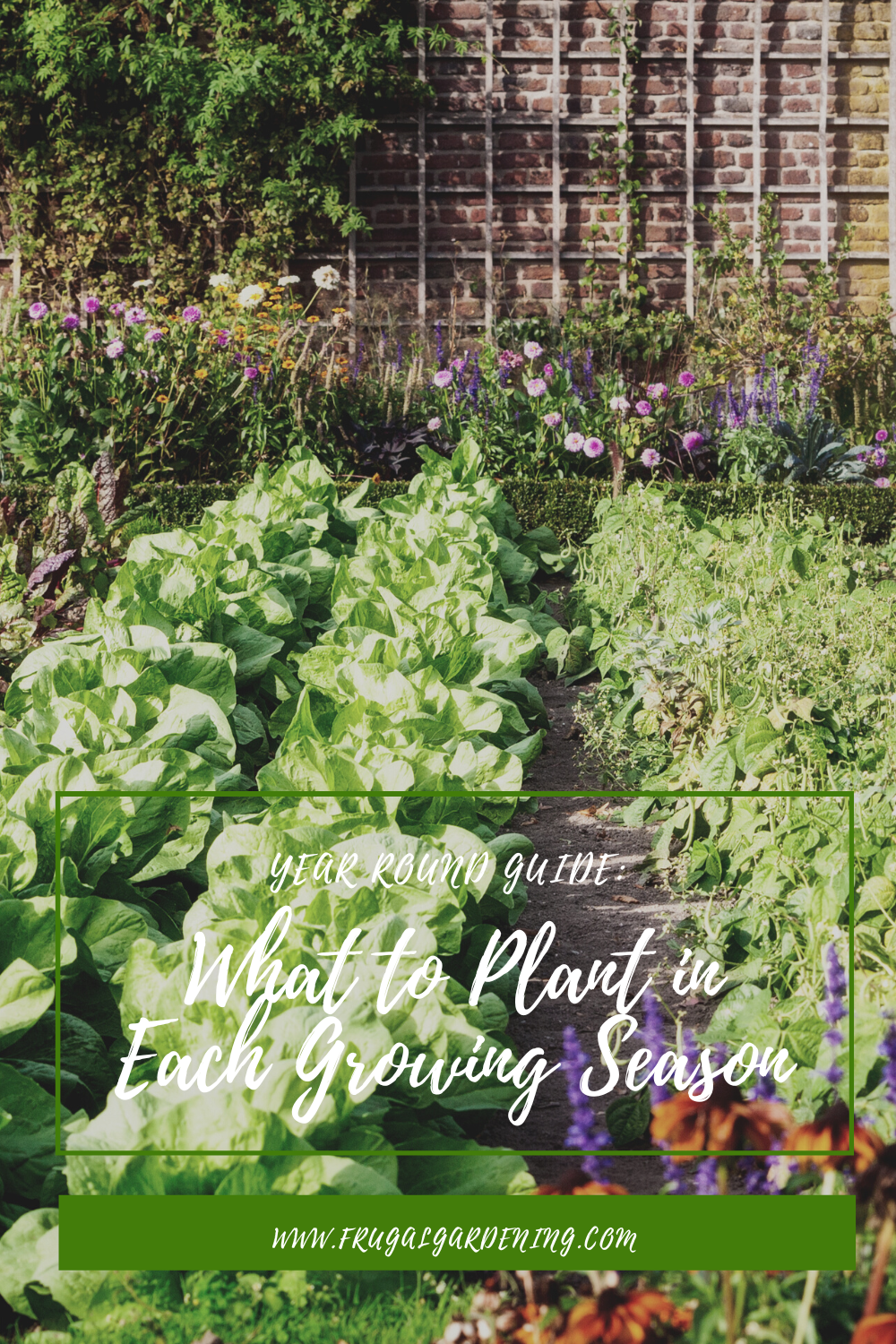
Planning what to plant each season can be fun as you dream of all the delicious things your kitchen garden will bring you, but you should know your hardiness before you start buying plants.
Your Zone
The USDA has divided America into hardiness zones. A hardiness zone is a geographical area that determines which plants grow best in that climate.
You can use your zone to pick varieties especially well adapted to your climate.
And if you know your hardiness zone, you can find average soil temperature data during different parts of the year, so you always plant seeds or transfers at the right time.
Spring
Growing a spring garden means growing cold-weather crops. Some of these veggies can survive frost, and others get sweeter with low temperatures.
Leafy Greens
Lettuce
Seeds can be sowed as soon as the ground can be worked, 2 weeks before the last frost, or up to 1 month before the last frost date if you are sowing inside.
Kale
Seeds are ready to plant immediately after the last frost or inside, 4-6 weeks before the last frost.
Spinach
Spinach can be started inside as early as 6 weeks before the last frost date, and you can sow seeds directly in the soil as soon as it can be worked.
Cabbage
Cabbage should be planted 4 weeks before the last frost, or it can be started up to 8 weeks before the last frost.
Fruit Trees
Most fruit trees are sold as bare-root plants meaning they come without being potted in soil. Instead, they have been stored in a cool area all winter while in a dormant state. Early spring is the best to get fruit trees in the ground because transplanting the dormant tree is less stressful than planting the active tree.
Summer
The season of plenty. Gardeners love summer.
Tomatoes and other Nightshades
The nightshades include tomatoes, peppers, eggplants, and potatoes. These crops should be started within 4-6 weeks before the last frost or sowed directly in the soil within a few weeks.
Cucumbers and Melons
Cucumbers, watermelons, and honeydew can be started 4-6 weeks before the last spring frost or after the soil has reached about 60℉.
Squashes
Squashes, like crooked neck or zucchini, have the best chance of germination if they are sowed directly in the soil soon after the last frost.
Beans
You should directly sow beans into the garden soil shortly after the last frost.
Autumn
You can grow everything listed for the spring in the autumn.
Leafy Greens
Lettuce
Start inside in a cool place 60 days before the first frost date.
Kale
Start at least 45 days before the first frost, but 60 days is ideal.
Spinach
You should start spinach at least 60 days before the first frost date.
Cabbage
Plant cabbage as early as 8 weeks before the first frost date.
Onions
Onions are a staple of the fall garden. Plant onion seeds directly in the soil 2-3 weeks before the first frost.
Garlic
Plant garlic bulbs 3 weeks before the ground freeze in your area.
Conclusion
As you think about planning your garden throughout each season, double-check the dates of frost and freezing, and check for varieties that are well adapted to your hardiness zone.
Read More:
10 Best Gardening Podcasts Worth Listening To
Are Old Tires Toxic to Plants?

Ali is a homeschooling mom of 5 who includes gardening and food prep as important subjects in her school. She has been raising plants her whole life and learned how to garden from her father. When she isn’t caring for her plants, she can be found reading or hiking.
Leave a Reply